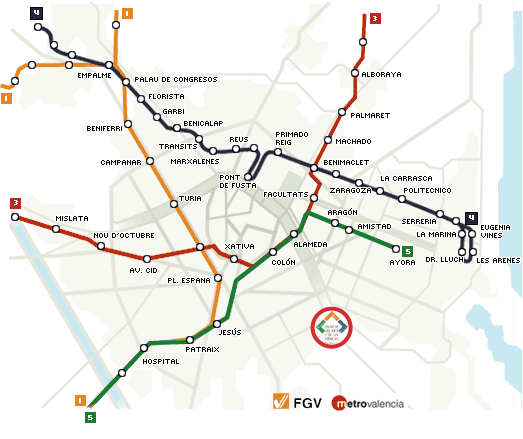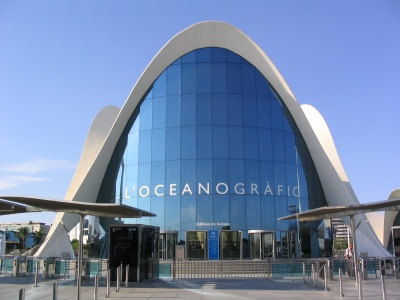
L'Oceanogrāfic
The Oceanographic is the greatest marine Park of Europe. It is also an important scientific centre. One of its main goals is to educate people to protect the sea. It shows the main marine ecosystems of the world.

The Oceanographic contains 45,000 fishes, invertebrates and marine mammals. There are about 500 species. The exhibits are displayed in a series of sculptural structures, arranged around a huge lake, each devoted to a different sea. The entrance is a pavilion with an undulating roof like the petals of a giant water lily, an effect reminiscent of the work of Antoni Gaudi. The first area deals with the Mediterranean, with seven aquariums recreating different environments inhabited by rays, moray eels, sea cucumbers and scorpion fish. There is a contact pool, where you can touch some of them.
In the Temperate Zone, you an see a giant crabs recreating the Izu Peninsula in Japan, which lies on one of the biggest fault lines in the world. There is an underwater cave specially adapted for the visually and physically impaired, but is open to everyone. In the Oceans area, sharks swam just above your head as you walk through a 115ft tunnel.
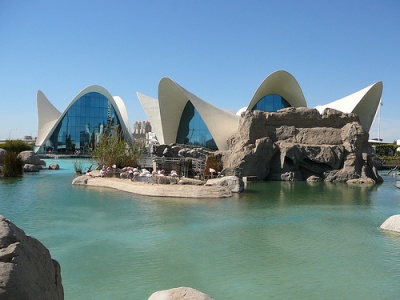
Above ground, a mesh globe, 85ft high, houses the Wetlands, recreating marshland and mangrove swamps. Crossing the lake, via teak walkways, you will find the Submarino restaurant, housed in another water lily pavilion. Although there is a variety of places to eat and drink around the complex, this is a proper restaurant that is open for dinner as well as for visitors to the marine park.
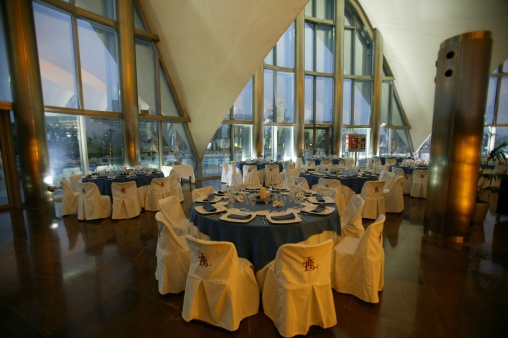 |
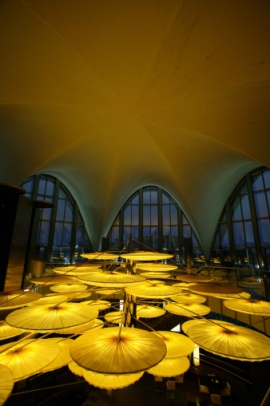 |
A structure like a huge scallop shell turned out to be an underwater auditorium, where the backdrop to the stage is an aquarium recreating the Red Sea. Nearby is the Dolphin-arium, where 20 bottlenose dolphins live in five pools. The stand can hold 2,200 spectators at a time for the shows, which aims to be educational as well as entertaining.
There is an important research centre on site, where projects include the reproduction of species in danger of extinction. The marine biologists will also be monitoring the behaviour of the white whales and walruses housed in an igloo structure where the aurora borealis is projected on to the ceiling.
You could easily spend a whole day in the Oceanographic, and another day in the rest of the City of Arts and Sciences.
How to arrive to "L'Oceanogràfic"?
By Coach and Bus
Valencia coach station is located on the bank of the former course of the River Túria. This is the stopping place for regular services arriving from all over Spain. To get to the City of Arts and Sciences from here, just cross the river and catch EMT bus nº95 .
The following EMT buses go the City of Arts and Sciences: 19, 35, 95 y 40. Buses nº 19 and nº 40 can be caught at university stop.
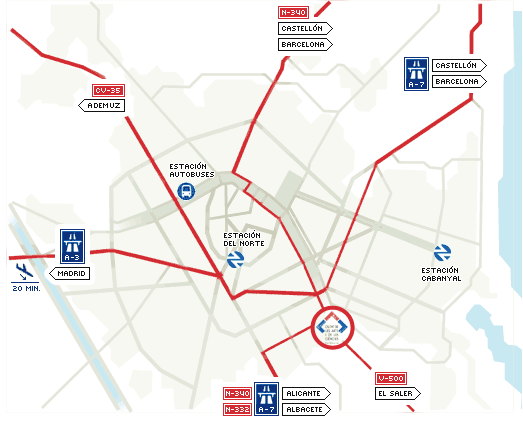
By Underground.
The metro lines closest to the City of Arts and Sciences are lines nº 3 and nº 5 . We recommend using the Alameda stop, approximately 15 minutes from the complex. For more information, click here.
